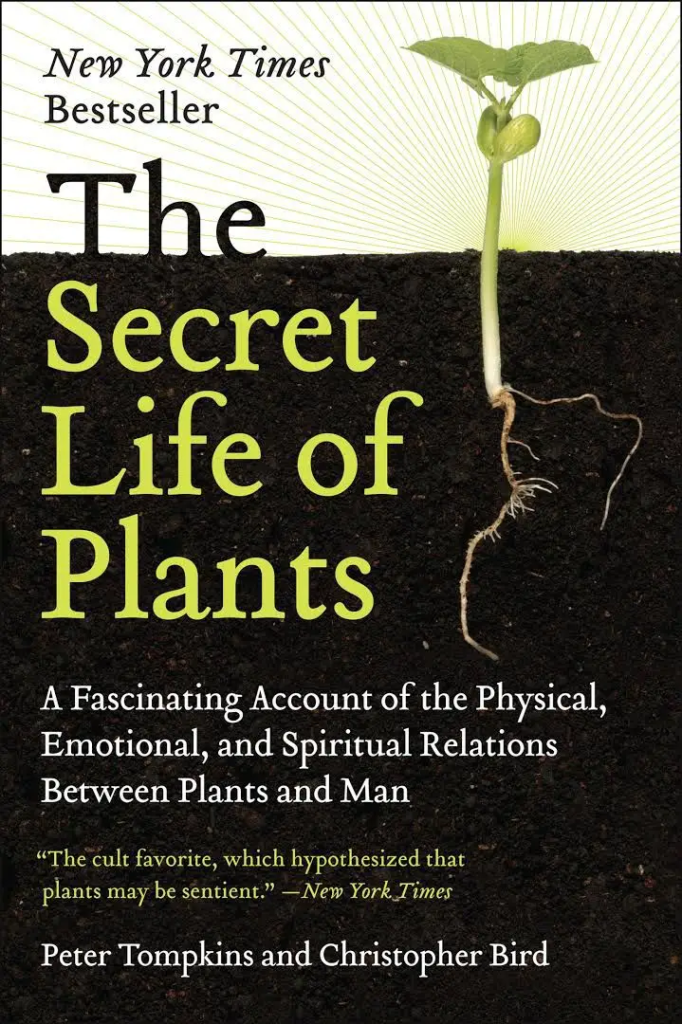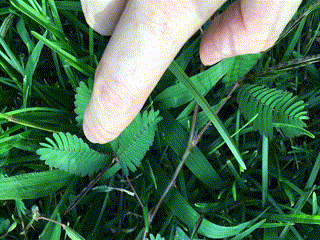We know that animals have nervous systems, so they can sense the surrounding environment and carry out activities such as foraging, hunting, migration, and courtship. However, it is generally believed that plants do not have a brain or central nervous system and are limited by their own immobility, so they cannot “take action” when facing environmental changes. So, do plants really have no nervous system as everyone thinks?
In 1973, a book called “The Secret Life of Plants” became popular in the United States and was listed on the New York Times non-fiction bestseller list. From a romantic perspective, the author claimed that plants have emotions, can think, prefer classical music to rock music, and can perceive human thoughts and show corresponding stress responses. However, the mysterious phenomena described in this book have not been successfully reproduced by later botanists.

In 2006, six scholars jointly wrote an article in the authoritative botanical journal Trends in Plant Science [1], proposing the concept of plant neurobiology for the first time. They claimed that the complexity of plant behavior observed by people cannot be simply explained by genetic and biochemical mechanisms.
Plants can sense and respond to environmental changes, such as photosynthesis, gravity, temperature, etc., and the electrical and chemical signals in plants are highly similar to the nervous systems of animals. Perhaps plants are “much smarter” than we think, and the difference between them and animals is not that big.
Jack C Schultz, a professor of plant research at the University of Toledo, believes that plants are just “very slow animals.” “You only need to make a fast-forward movie of growing plants and you will find that they are like animals.” Olivier Hamant, a botanist at the University of Lyon in France, also said so. In fact, if you observe carefully, there are actually many plants around you that react quickly, such as the easily teased mimosa, the Venus flytrap that can catch living things, and the sunflower that likes to turn its head to follow the sunlight.
First of all, I would like to mention the mimosa. I believe that many people still have the good memories of playing with it when they were young. Gently touch the leaves of the mimosa, and the leaves will quickly close and droop. After a few minutes, they will open again, but as long as you touch them again, they will quickly close again, and their whole body conveys the cute message of “Don’t touch me, I’ll be shy”.

The Venus flytrap can not only obtain nutrients through photosynthesis, but also sense the touch of prey and catch small insects for its own “meal”. The two leaves on the top of the Venus flytrap are like an insect trap, which is usually open. After sensing the prey of the right size, it will catch and close. The bristles on the edge of the leaves cross-bite to prevent the insect from escaping, and the digestive fluid secreted from the leaves dissolves and absorbs the insect. This unique ability of the Venus flytrap has also won the love of many people, making it a popular home-raised insect-eating expert.

There are also sunflowers in the growing season, which move towards the light and maintain the good habit of circadian rhythm. They follow the sun during the day, and whether they “shake their heads” and return to their positions at night has also become a hot topic online.
After seeing the lovely mimosa, Venus flytrap and sunflower, it is not difficult for us to understand why scientists are so happy to give plants a good name. Nowadays, more and more studies have proved that plants have the ability to perceive, and even the mechanism behind this perception is slowly unveiling the mysterious veil to us.
Although plants may not feel anything about an impassioned sonata, the approach of a hungry caterpillar is another matter. Plant biologists have found that plants can sense the touch of caterpillars crawling over and establish a warning to other leaves to start the expected defense response. In other words, when a leaf is bitten, it will “loudly” warn other leaves.
As far as we know, in animal cell nerves, this communication is usually through the release of glutamate by activated nerve cells, which triggers calcium ion waves in neighboring nerve cells. Just like the beacon signal or radio wave transmission in human communication, the calcium ion wave is transmitted from one nerve cell to another, thus realizing (relatively speaking in the body) long-distance communication.
So how do plants stay alert in the face of danger?
The latest research shows that some plants also use the same signals as animals to send warning messages to other parts of themselves.
This time, the research team led by Toyota was originally studying the response of plants to gravity and suspected that calcium signals played a role in it. They developed a molecular probe that emits brighter light when calcium ion levels increase, and cultivated it in the model plant Arabidopsis through genetic engineering methods to express GCaMP3 fluorescent protein for direct observation under a fluorescence microscope.

Scientists conducted two sets of experiments to observe plants under trauma: one set was eaten by caterpillars, and the other set was cut by scissors. The results of the two sets of experiments were similar, indicating that the chemical signals of herbivores had no effect on the “pain” transmission process. When plants were injured, scientists observed under a fluorescence microscope that the light near the wound was significantly brightened and then weakened, and was transmitted to the distance through the vascular tissue. As the [Ca2+] cell signal spread, the expression genes of defense markers increased, and jasmonic acid compounds, known as “wound hormones”, were produced.
As important signaling molecules in plants, jasmonic acid compounds not only participate in the regulation of many physiological processes of plant growth and development, but also induce the expression of a series of defense genes and the synthesis of defense response chemicals, thereby regulating the “immunity” and stress response of plants. A paper published in Nature Ecology and Evolution showed that the plant self-protection mechanism triggered by jasmonic acid compounds would make the plants themselves more unpalatable to caterpillars, reduce the herbivory of caterpillars, and even reversely prompt them to kill each other and feed on each other.

(The cut wounds and leaf veins are particularly bright)
Toyota’s subsequent experiments further determined the source of all these reactions: similar to animal nerve cells, glutamate stimulated calcium ion waves. Glutamate receptor-like ion channels sense glutamate to trigger a series of changes in calcium ion concentrations, which spread between the phloem vascular system and intercellular filaments. This long-distance signal transmission based on glutamate is fast: it only takes one to two minutes to travel on the green “highway” to activate defense hormones throughout the tissue, allowing plants to respond in time when facing pain, allowing undamaged leaves in the distance to prepare for possible upcoming attacks.
Although plant biologists knew about the perception ability of plants long before, they did not know the principles behind it. Recent studies have revealed that although plants do not have the same nervous system as animals, they have also evolved their own unique information communication system and can respond quickly to the external environment. This provides unlimited possibilities for future research on information communication within plants: perhaps one day, we can crack, monitor, and even control the internal communication of plants.
